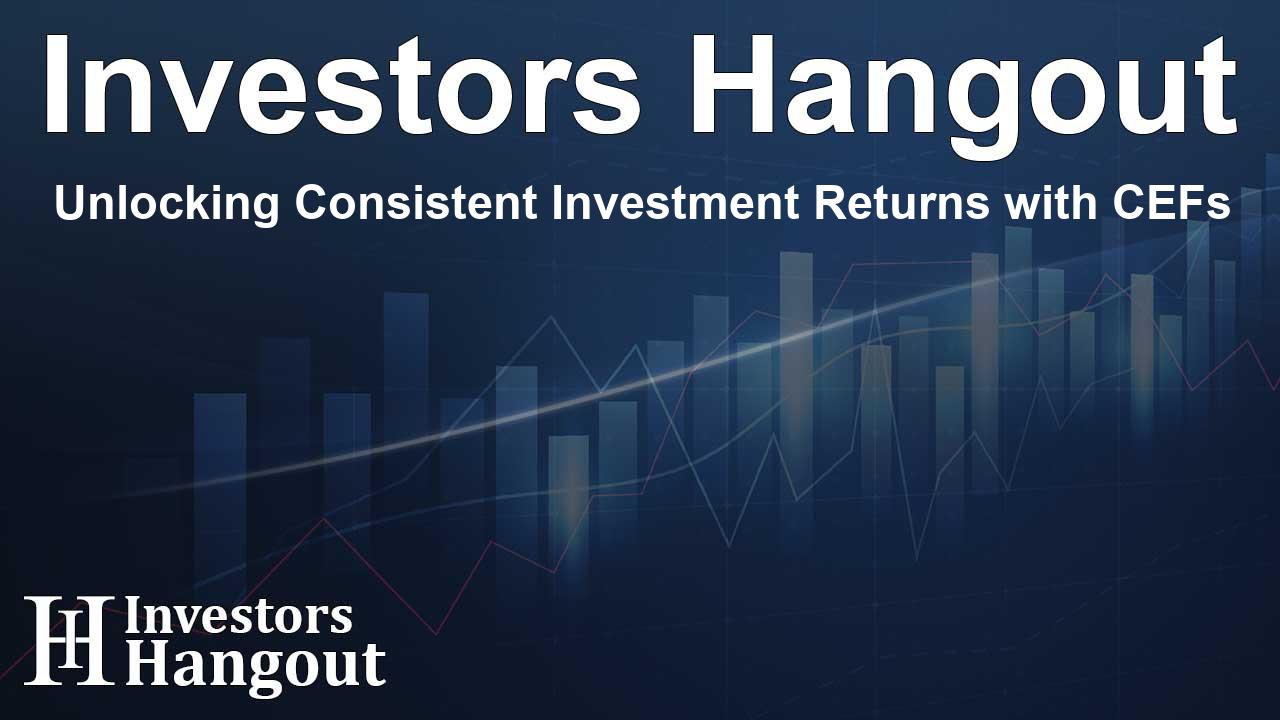Unlocking Consistent Investment Returns with CEFs

The Potential for Lasting Investment Returns
Recent media discussions highlight the dominance of the US economy and its impressive stock market performance, and surprisingly, there is some truth to this. Income investors can tap into this trend by considering closed-end funds (CEFs), many of which offer yields above 9%. With these investment vehicles, it's possible to achieve annualized returns around 10%, enabling a steady income stream that may last indefinitely.
Why US Stocks are Leading the Market
Numerous reports emphasize the remarkable capabilities of American companies. Insights from leading figures, such as Ray Dalio of Bridgewater Associates, reveal that US firms outshine their global counterparts in innovation, efficiency, and capital deployment. This strong performance explains why the S&P 500 has consistently outperformed international indexes.
The Performance Advantage of US Stocks
As of recent analysis, the S&P 500 index has surged nearly 500% since 2011, a stark contrast to broader international markets, like the Vanguard Total International Stock ETF, which has merely climbed around 82.6%. This disparity highlights the volatility and risks associated with investing outside of US markets, which often yield unappealing returns.
Benefits of Closed-End Funds (CEFs)
Investors should remember that the CEFs we manage have enjoyed this growth as well. For example, the Adams Diversified Equity Fund has returned an impressive 198% since our acquisition. Such results showcase the power of high-yield CEFs that focus on US equities.
The Role of Earnings Growth
One of the key reasons behind the long-term performance of US stocks lies in rising earnings for shareholders. For instance, tech giant Apple has posted earnings per share of $6.55, representing substantial growth and highlighting how premium investments can lead to steady appreciation over time.
The Inflation Factor
Increasing revenue, even when tied to inflation, presents another key driver. Companies often experience rising sales amidst increasing prices, enabling stocks to hold their value or appreciate steadily, which is why many investors view stocks as an efficient hedge against inflation.
Understanding Risk Premiums
Investing in stocks involves navigating potential market downturns. Historically, stocks have offered a risk premium, compensating investors for the volatility. This premium creates an attractive incentive for holding onto these investments over the long haul.
Driving Forces Behind Productivity Growth
Growth in the US economy is also fostered through technological advancements and population dynamics, which contribute to overall productivity gains. Over time, these factors combine to facilitate growth in stock values, adding yet another layer of security for long-term investors.
Summarizing Key Insights
When we assess these fundamental factors, it becomes clear that US stocks can realistically be expected to grow by around 9.8% annually. Moreover, historical data supports this outlook, demonstrating an average annual return of 10.4% for the S&P 500 since the late 1980s.
Long-Term Growth Potential
Investors can maintain optimism regarding future gains, with projections suggesting an annual rise of about 10%. Closed-end funds such as ADX facilitate this growth by providing substantial yields, ensuring that dividends continue flowing even during market fluctuations.
Integration of CEFs in Investment Strategies
Unlike conventional index fund investments with lower yields, CEFs enable investors to access cash regularly without having to divest their holdings during downturns. This provision permits investors to patiently wait for market recoveries while still enjoying profitable returns.
Frequently Asked Questions
What are closed-end funds (CEFs)?
Closed-end funds are investment funds that raise capital through an initial public offering and then trade on stock exchanges, allowing investors to buy or sell shares throughout the trading day.
How do CEFs compare to traditional mutual funds?
CEFs typically offer higher yields than traditional mutual funds and allow for flexibility in trading, unlike mutual funds, which are only priced at the end of the trading day.
What impact can rising earnings have on stock prices?
Rising earnings generally indicate a company's strength and growth potential, leading to higher stock prices and increasing returns for shareholders.
Why is it beneficial to invest in US stocks now?
The US economy shows promising growth trends, and investments in US stocks can offer substantial returns, especially with the current trends favoring high returns on equity and dividends.
How can investors leverage dividends from CEFs?
Investors can collect dividends from CEFs, providing a steady stream of income without needing to sell their shares, which helps in minimizing risks associated with market fluctuations.
About The Author
Contact Olivia Taylor privately here. Or send an email with ATTN: Olivia Taylor as the subject to contact@investorshangout.com.
About Investors Hangout
Investors Hangout is a leading online stock forum for financial discussion and learning, offering a wide range of free tools and resources. It draws in traders of all levels, who exchange market knowledge, investigate trading tactics, and keep an eye on industry developments in real time. Featuring financial articles, stock message boards, quotes, charts, company profiles, and live news updates. Through cooperative learning and a wealth of informational resources, it helps users from novices creating their first portfolios to experts honing their techniques. Join Investors Hangout today: https://investorshangout.com/
The content of this article is based on factual, publicly available information and does not represent legal, financial, or investment advice. Investors Hangout does not offer financial advice, and the author is not a licensed financial advisor. Consult a qualified advisor before making any financial or investment decisions based on this article. This article should not be considered advice to purchase, sell, or hold any securities or other investments. If any of the material provided here is inaccurate, please contact us for corrections.
